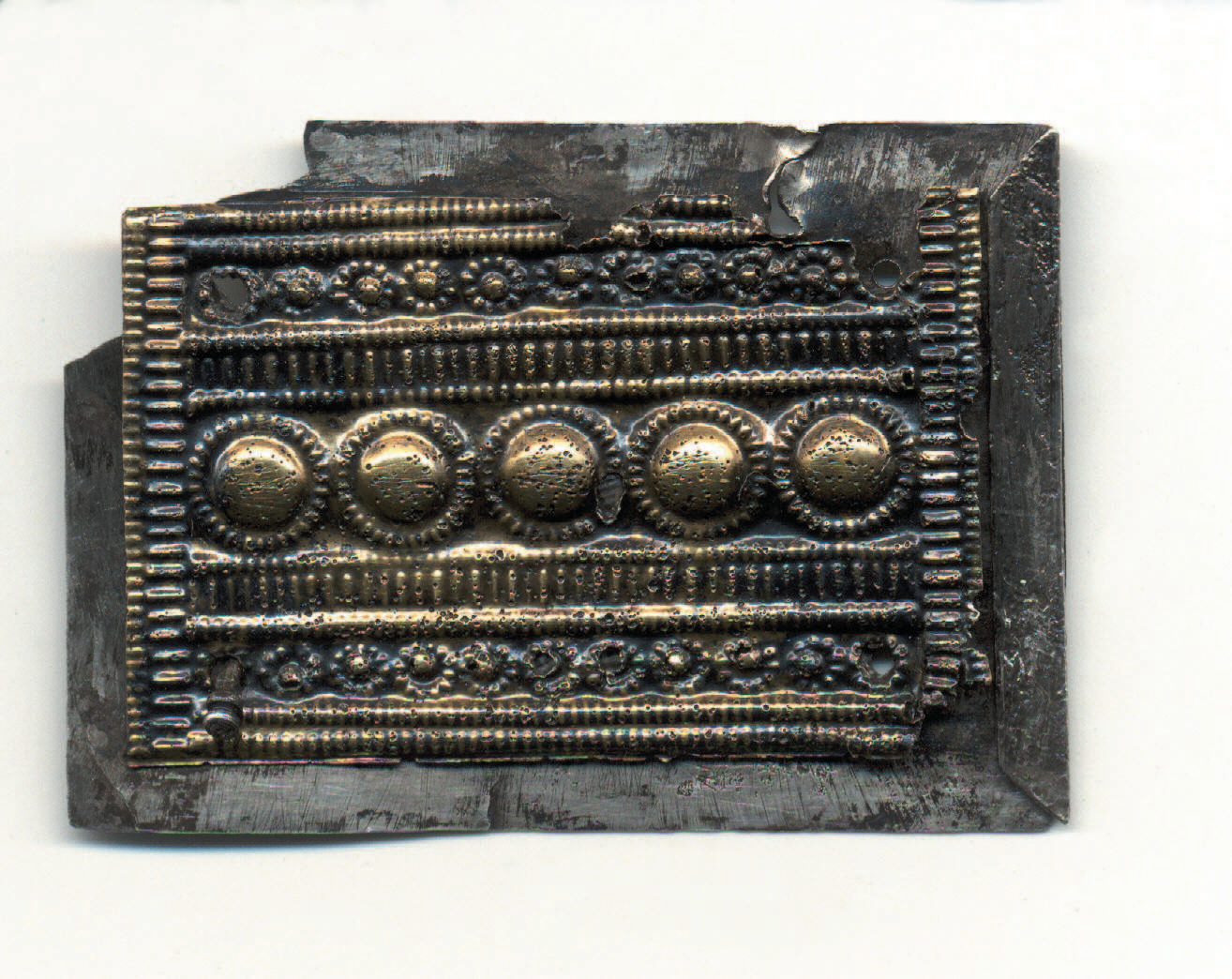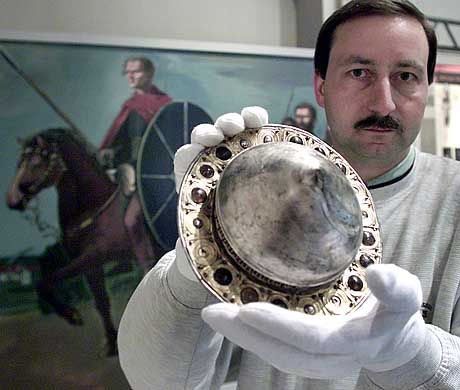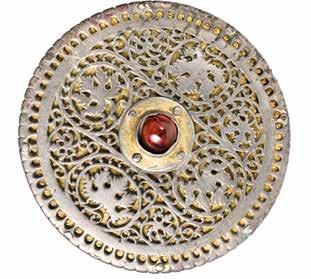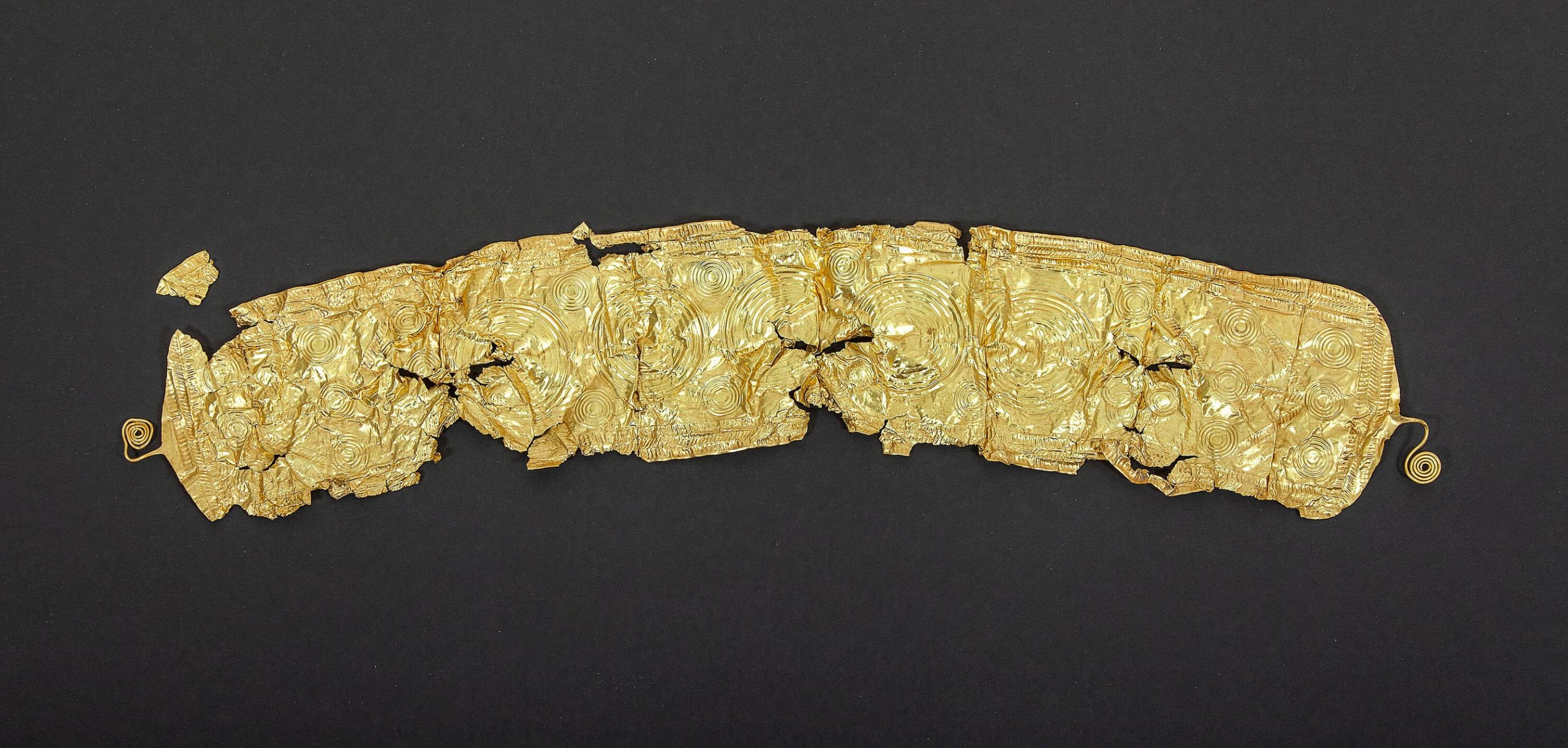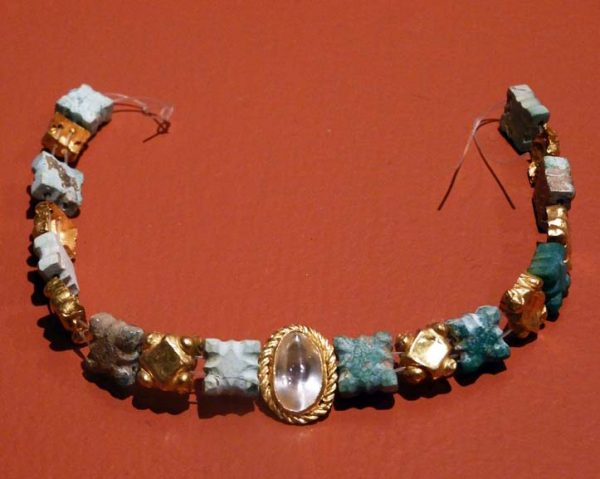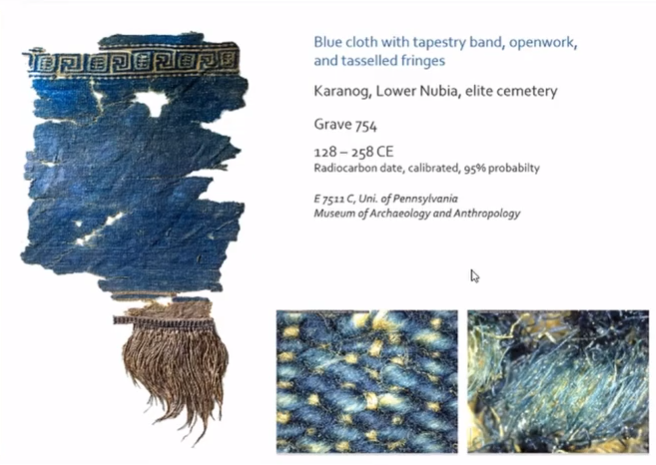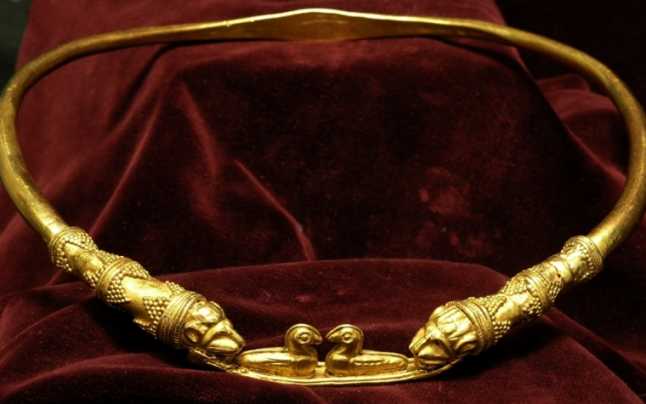
https://ar.culture.ru/ru/subject/epoletoobraznaya-zastezhka-3
17.65x10x2.4 cm, bronze, 1st C BCE – 1st C CE
From a burial ground near the village of Pyany Bor (nowadays Krasny Bor) in Tatarstan. Most researchers believe that the Pianobor culture was widespread from the middle of the 2nd century BC to the beginning of the 3rd century AD on the territory of the Middle and Lower Kama region.
The most numerous group of archaeological finds was made up of jewelry and costume details. They were placed on funeral vestments in the same way as they were worn during life, so archaeologist Vladimir Gening found that the epaulette-like clasps were most likely buckles from women’s waist belts.
[Shoulder] Epaulet-like clasp of the 1st-2nd centuries, the Ural
Эполетообразная застежка
Bronze, iron. Length: 30 cm; width: 17.8 cm (33 x 18.5)
Hermitage, Inventory number 562-2

http://collections.hermitage.ru/entity/OBJECT/1442628
https://art.biblioclub.ru/picture_66114_epoletovidnaya_zastejka/

Поясная эполетообразная застежка. Бронза. Найдена в бывшем Мензилинском уезде Уфимской губернии. Эпоха раннего железа, пьяноборская культура, II в. до н.э. – II в. н.э.
Epaulet-shaped belt buckle. Bronze. Found in the former Menzilinsky district of the Ufa province. The era of the early iron, Pianoborskaya culture, II century. BC. – II century. AD
National Museum of the Republic of Bashkortostan [Bashkiria]
https://museumrb.ru/fondy/fond-arheologiya/
More pictures >> https://underground-history-su.com/viewtopic.php?f=651&t=362527

Застёжка эполетообразная, случайная находки у д.Гуляево, Удмуртия, Вавожский р-н. 2 век н.э.
Национальный музей Удмуртской Республики имени Кузебая Герда
https://vk.com/photo-61200224_456255995
http://v4.conf.udsu.ru/files/1305473944.pdf

Epaulet clasp with images of animals from the collection of the Istomin brothers [ found by the brothers M.L. and I.L. Istomin], found near the village of Shuryshkary, the river Ob region, Siberia.
Epaulet-like clasp with images of fur-bearing animals. M.L. Istomina, 1975, White Mountain.
The total length is 18 cm, the diameter of the plaque is 10 cm. The product consists of a round plaque and four “plaits”, ending with a crochet. The clasp is cast in a double-sided complex shape, the hook is bent along the long axis. The reverse side is rough, the outer side is smooth, polished. A loop (broken) was cast from the back for attaching the buckle to the belt and a large hook. A kind of longitudinal stiffening ribs are fixed.
On the buckle plaque there is a composition of three fur-bearing animals with long tails, arranged around a convex hemisphere in the center of the plaque one after the other in a counterclockwise direction. The claws of the animals’ paws frame the hemisphere. The figures are cut with rollers. The composition is surrounded by a wide stripe with an edge in the middle and two pseudo-curved edges along the edges. Along the perimeter, the plaque is decorated with 16 convex hemispheres, belted with pseudo-twisted edging.

Epaulet-shaped clasp with the image of four bears. Purchased in the village Мужи in 2004, previously was part of the sacred things of the Khanty family. The product consists of a round plaque and four “plaits”, ending with a crochet. The total length is 15 cm, the diameter of the plaque is 8.2 – 8.7 cm. The clasp is cast in a double-sided complex shape, the hook is bent along the long axis. The reverse side is rough, apparently, conveys the structure of the material of the form, the outer side is smooth, well polished. Cast from the back: a triangular loop for which the buckle was attached to the belt and a large hook. A kind of stiffening ribs are fixed – one goes around the circumference of the plaque, two describe a loop along it and end with “bundles”. A rim is formed along the edge of the plaque on the inner side.
On the buckle plate in the central part there is a composition of four bear heads, laid between the forepaws. “Bears” are located around a seven-sided umbon, encircled by a roller.
Several more clasps with images of a bear are known from random finds [Chernetsov, 1953]. Perhaps the largest number of epaulet-like fasteners was found in the southeast of the region: in the Aydashinskaya cave [Molodin, Bobrov, Ravnushkin, 1980, pl. 20, 1 – 2], the Ishim collection [Ermolaev, 1914, Tab. 6, 10], seven fasteners come from the Fominsk burial grounds of the Upper Ob region [Shirin, 2003]. The latest by date of production was found in the Bishop’s Zaimka burial ground [Mogilnikov, 1987]. The lifetime of the fasteners is determined approximately within the 1st century. BC. – the middle of the 1st millennium AD The “primary sources” for their creation, most likely, the Kama epaulette-like fasteners of the Pianoborsk and Aazelin times and the West Siberian hook fasteners served. The image of a bear with its head between its paws (a bear in a sacrificial pose, a bear in a sacred pose, etc.) is of West Siberian origin.
SOURCE:
A.V. Baulo, M.L. Istomin, N.V. Fedorov. New finds of medieval bronze items in the north of Western Siberia
А.В. Бауло, М.Л. Истомин, Н.В. Федорова. Новые находки средневековых бронзовых изделий на севере Западной Сибири
http://www.silkroads.org.cn/portal.php?mod=view&aid=37451

